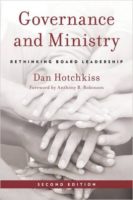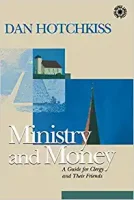
“I wish we were more transparent about our finances.” For almost every problem congregations face, transparency is one proposed solution. Treasurers and business managers—who work hard to produce honest, accurate reports—often are surprised by the implication that they’re hiding something. Transparency is good, but flooding people with more data rarely solves the problem. True transparency requires a plan to give financial information to each of four distinct audiences.
Rather than more data, people need more information—data framed so that it in-forms their thinking. Not everybody needs and wants the same information—it depends on their decision-making roles. Here are some suggestions about the information each group needs:
Paid and unpaid managers
People who manage programs, buildings, personnel, and cash flows need information that helps them control cost, monitor revenues, and achieve goals. Line-item budget spreadsheets are a good format for informing operational leaders how they are doing.
Good communication goes both ways. Managers who raise financial concerns and hear nothing back are apt to shrug and feel they have permission to ignore problems. But when management is paying attention, the spreadsheet format facilitates transparency among leaders of programs and operations.
Unfortunately, in many congregations, the budget spreadsheet is the only way financial information is conveyed. The spreadsheet is a management-oriented tool. At meetings of the board and congregation it can prompt people to waste time second-guessing past management decisions rather than envisioning the future.
The Governing Board
Budget information should be available to anyone who wants it, but the governing board needs data packaged in a different way. The Board’s decisions about policy, strategy, and guidance to the head of staff require a higher-level view.
For the board to have its highest impact on the congregation’s future, the treasurer, finance committee, and others should prepare for board conversations about strategically important questions. For example, “Whose children will our future education programs benefit, and how?” “What location, language, and staff roles will define our future ministry?”
Such questions are never strictly financial, of course, but they are never strictly non-financial either. Any plan for addressing them requires a spending plan and funding strategy that match. In this context, information about giving trends is more useful than a list of actual and budget numbers.
Two practical tips:
- At least annually, the board needs an educational event to enable all board members to receive financial information with understanding.
- The budget spreadsheet is sent to board members in advance, and each board member is expected to study it, raise questions by email, and propose agenda items arising from it. But no board time is used to read or hear a summary of it.
Many boards have adopted the rule: no oral reports at board meetings, and this applies especially to financial reports. If a topic deserves to be on the board agenda, the board should put it there, rather than passively receiving it from others.
The Wider Circle of Leaders
Most congregations, regardless of size, have a group of 60 to 80 people whose support is needed for any significant decision. In small congregations, this group comprises almost everyone—in larger ones, it is a small minority. You may see most of them at congregational meetings; others operate more quietly by giving money, time, expertise, and spiritual leadership. Clusters of them gather as the deacons or elders, in Sunday-school classes, or informally in homes.
For this group, financial communications should be framed as, “Here are 1–3 important issues on the board’s agenda. The board expects to make decisions within the next year or two and would value your help thinking through the issues before they decide.”
Having framed the issues, you need to figure out how to let this group know you want their input. As a rule, the Wider Circle will not pay attention to requests delivered in the pulpit or the newsletter—they expect to be specifically asked, even if they would deny having any special status.
Your congregation may have traditional ways of gathering this group—if you’re in doubt, ask the last long-tenured clergy leader how they did it—or you may need to invent ways. On p. 128-130 of Governance and Ministry, I’ve described specific modes of working with this circle: World Café, parlor meetings, expert meetings, and so on.
The Wider Circle is a fluid group—people join and drop out over time—so you can invite the whole congregation if you like. But pay attention to who comes! Members of this group are much more likely to support the board’s financially impactful strategy decisions if they know their thoughts and feelings have been heard and thoughtfully considered.
Congregants and Prospective Congregants
This largest group of all—which in theory, in most American denominations, holds a great deal of power—is actually quite passive. Unless there is dramatic business (or exceptionally good food) few attend congregational meetings. Instead, this group votes mostly with its feet and with its dollars.
Financial communications to the “whole congregation” should not be focused on governance or management decision-making. Instead, the institution makes its case by telling how people’s support will benefit themselves and others, extend their values and help them live into their best selves.
For leaders, true transparency is a challenge! We get so used to talking about staff positions, programs, and budgets, it’s hard to shift to telling stories about how lives are enhanced by the congregation’s work. But with this widest group—especially in larger congregations—you are talking mainly to your “customers” and donors. Some of them will someday join the inner circle, but for now they are supporters and beneficiaries, not decision-makers.
Each of these groups has its own financial information needs, and financial transparency requires that leaders craft a message appropriate to each. When you succeed, you invite your whole constituency to feel it “owns” the congregation’s budget, strategies, and ministry.
Dan Hotchkiss has consulted with a wide spectrum of churches, synagogues, and other organizations spanning 33 denominational families. Through his coaching, teaching, and writing, Dan has touched the lives of an even wider range of leaders. His focus is to help organizations engage their constituents in discerning what their mission calls for at a given time, and to empower leaders to act boldly and creatively.
Dan coaches leaders and consults selectively with congregations and other mission-driven groups, mostly by phone and videoconference, from his home near Boston. Prior to consulting independently, Dan served as a Unitarian Universalist parish minister, denominational executive, and senior consultant for the Alban Institute.


